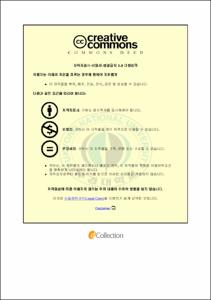A Study on Perturbation-based Stochastic Finite Element Method for Nonlinear Dynamic Problem
- Alternative Title
- 확률 변분원리를 기반으로한 비선형 연속체의 동적거동을 위한 확률 유한 요소법의 연구
- Abstract
- 구조의 비선형 분석과 추측 변수는 배건조와 해안건조에 있이 아주 중요하다. 어떤 동적 자극은 확정적인 시스템으로 다룰 수 없는 임의적인(무작위의) 파동 성격으로 모여지는 자연현상에 의해 일어난다. 이것은 필수적으로 임의적인 구조역학에서 기하학적고려 와 물질특성으로부터 비선형 발생을 고려하여야 한다.
엔지니어링에서 임의적인 시스템의 분석에 가장 많이 사용되는 시스템으로 추측 불안기법은 최근 연구의 활동적영역이 되었다. 이연구에서 우리는 다양한 문제에 대한 완전한 처리를 증명할 것이다. 이 목적에서 확률구조변수와 임의 동력 자극은 바로 동력의 기능 변동 포뮬레이션으로 소개된다. Weighted residual principle 과 작은 변수불안기법에 기초해서, 임의구조의 동적분석의 비선형 추측 변분 공식의 시스템 과 관계있는 증가 확률 유한 요소법들 또한 개발되었다. 계산의 효율을 높이기 위해 약간의 알고리즘도 토론되었다. 증가 재현방정식의 촉진과 확률 자극하에서의 확률 변수를 고려한 구조의 일시적 비선형분석이 편리하게 획득되었다. 전통적인 두번째의 SFEM의 제한 이래로 비선형 동력 문제의 n번째의 일반적인 불안에 기초한 변분원리를 개발하려는 시도가 만들어졌고, 자세한 공식이 유도되었다.
Nonlinear analysis of structures with stochastic parameters is of considerable importance as many of ship structures, offshore structures, etc. some dynamic excitations that are excited by nature’s actions which exhibit randomly fluctuating character cannot be treated as deterministic systems. It is essential to consider nonlinearities arising from geometry considerations and material properties in random structural dynamics.
As the most widely used technique for analyzing random systems in engineering, stochastic perturbation technique has recently become an active area of research. In this work, we try to demonstrate a thorough treatment of a variety of problems, for this purpose, the stochastic structural parameters and random dynamic excitation are introduced directly into the dynamic functional variational formulations. Based on the weighted residual principle and the small parameter perturbation technique, a system of nonlinear stochastic variational formulation of dynamic analysis for random structure and the relevant incremental stochastic finite element method are also developed. In order to raise efficiency of calculating, some algorithms are also discussed. With the aid of incremental recurrence equations, the transient nonlinear analysis of structures with stochastic parameters under stochastic excitation may be obtained conveniently. Since the limitation of traditional second-order SFEM, an attempt to develop n-th generalized perturbation-based variational principle for nonlinear dynamic problem was made, the detailed formulations were derived.
- Issued Date
- 2009
- Awarded Date
- 2009. 2
- Type
- Dissertation
- Keyword
- stochastic variational principle nonlinear response stochastic finite element method perturbation technique
- Publisher
- 부경대학교 대학원
- Alternative Author(s)
- Wang, Qing
- Affiliation
- 부경대학교 대학원
- Department
- 대학원 조선해양시스템공학과
- Advisor
- 배동명
- Table Of Contents
- Ⅰ. Introduction = 1
1. Background = 1
2. Basic Methodologies = 2
3. Objective of Study = 4
4. Outline of Thesis = 5
5. Contribution of This Work = 6
References = 8
Ⅱ. Mathematical Background = 10
1. Introduction to Probability Theory = 10
1.1 Random Variables, Probability Density Functions and Cumulative Distribution Functions = 10
1.1.1 One random variable = 11
1.1.2 Multiple random variables = 12
1.2 Expectation and Moments = 14
1.2.1 One random variable function Y=f(X) = 14
1.2.2 Multiple random variables function Y=f(X₁,X₂,...,X_(n)) = 15
1.3 Linear Function of Random Variables = 16
2. Linear Statistical Analysis = 18
3. Random Process and Random Field = 20
3.1 Random Process = 20
3.2 Random Field = 23
4. Introduction to Perturbation Method = 24
4.1 The Mathematical Model = 24
4.2 Perturbation Approach = 27
5. Calculus of Variations = 29
6. Principle of Virtual Work = 31
7. Summary = 33
References = 34
Ⅲ. Nonlinear Finite Elements analysis in Continuum Mechanics = 35
1. Introduction to Nonlinear Analysis = 35
1.1 Basic Problem = 35
1.2 Incremental Step-by-Step Solution = 37
2. Formulation of The Continuum Mechanics Incremental Equations of Motion = 39
2.1 Equilibrium of Body = 40
2.2 The Deformation Gradient, Strain, and Stress Tensor = 43
2.2.1 Deformation gradient = 43
2.2.2 Strain measures = 45
2.2.3 Stress measures = 46
2.3 Continuum Mechanics Incremental Total and Updated Lagrangian Formulations = 48
2.4 Finite Element Matrix Formulations in TL and UL Formulation of Three-Dimensional Elements = 51
3. Introduction to Constitutive Relations = 56
4. Summary = 59
References = 61
Ⅳ. Perturbation-Based Nonlinear Stochastic Variational Principles for Dynamic Problem = 63
1. Deterministic Variational Methods = 63
1.1 Weighted Residual Method = 63
1.2 Muti-field Principles = 66
2. Stochastic Variational Methods = 68
2.1 Second-Order Perturbation-Based Nonlinear Stochastic Virtual Work Principle = 69
2.2 Numerical Examples = 76
2.3 Generalized Perturbation-Based Nonlinear Stochastic Virtual Work Principle with Single Random Variable = 82
2.4 Computational Example = 89
3. Summary = 103
References = 105
Ⅴ. Nonlinear Stochastic Finite Element Analysis = 107
1. Nonlinear Stochastic Finite Element Equations = 107
2. Probabilistic Distribution Output = 113
3. Two-Fold Superposition Technique = 115
3.1 Random Variable Transformation = 115
3.2 Two-Fold Superposition Technique = 117
4. Solution of Finite Element Equations = 120
4.1 Direct Integration Wilson- Method = 120
4.2 Newton-Raphson Method = 123
5. Application of SFEM on a Chemical Ship = 125
5.1 Loading Conditions = 127
5.2 Boundary Conditions = 128
5.3 Damping and Constitutive Relations = 130
5.4 Flowchart of Calculations = 131
5.5 Calculation Results = 131
6. Summary = 136
References = 137
Ⅵ. Conclusions = 139
1. Conclusions = 139
2. Further Study = 141
Appendix Ⅰ = 142
Appendix Ⅱ = 146
국문요약 = 149
Acknowledgments = 150
- Degree
- Doctor
- Appears in Collections:
- 대학원 > 조선해양시스템공학과
- Files in This Item:
-
-
Download
 A Study on Perturbation-based Stochastic Finite Element Method for Nonlinear Dynamic Problem.pdf
기타 데이터 / 6.53 MB / Adobe PDF
A Study on Perturbation-based Stochastic Finite Element Method for Nonlinear Dynamic Problem.pdf
기타 데이터 / 6.53 MB / Adobe PDF
-
Items in Repository are protected by copyright, with all rights reserved, unless otherwise indicated.